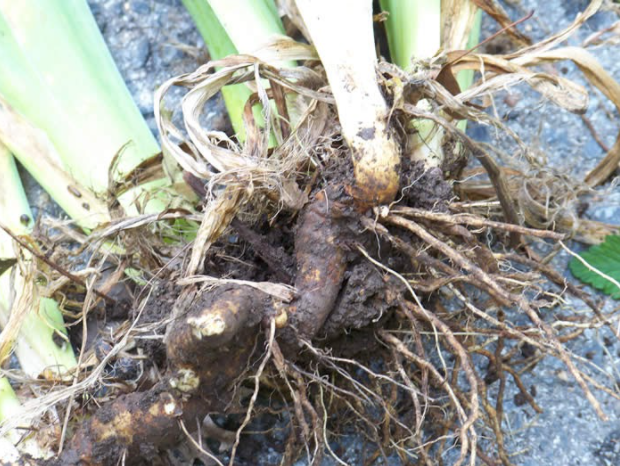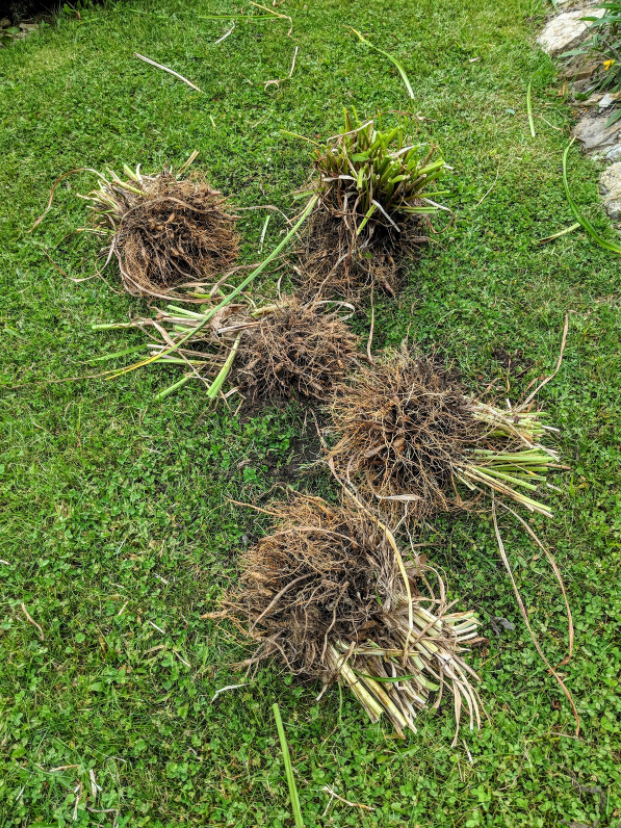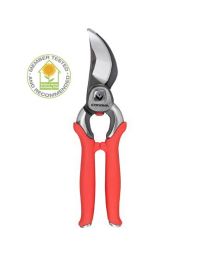Mid-August through mid-September is a good time to divide iris and daylilies in Minnesota. The temperatures are generally cool and dry and the plants will have plenty of time to root in before the winter arrives.

Van Bloem’ Bearded iris - grown from rhizomes
Tools needed for dividing:
- large knife
- pruners or loppers
- bulb dust
- root stimulator
- small digging shovel or garden fork to protect bulbs
- 10/90 solution of household bleach and water

Bi-colored daylilies - grown from fleshy roots
The when, why and how:
- Divide iris 4 to 6 weeks after flowering to reduce the incidence of bacterial soft rot.
- Divide daylilies in spring or immediately after flowering. Note: daylilies have fleshy roots, they are not a true lily and do not grow from rhizomes or bulbs.
- Dividing these groups of plants will increase the amount of blooms in the spring and also create a healthier plant.
- Plants eligible for division must be at least three growing seasons old.
- Cut back your Iris foliage to about one third of their height. Daylily foliage also needs to be cut back to about 5 inches or even less.
- Lift the entire clump with a small, long handled digging shovel or a garden fork.
- Use a sharp knife to separate the rhizomes and/or fleshy roots.
- Dip the knife in 10% bleach solution after each cut.
- The new iris transplants should have a firm rhizome with roots and a fan of leaves.
- Remove any old or soft rhizomes or roots, planting only the fresh younger ones.

Freshly dug up iris rhizomes - photo by University of Maryland Extension
The where:
- Iris and daylilies love a sunny, well drained soil.
- Place transplants in a slightly shallow hole about four inches deep.
- Cover the roots so the rhizome crown is slightly exposed. Plant daylilies at soil level.
- Do not plant too deep, as rot may occur.
- Water the plants in well with root stimulator. Follow directions on the container.

The dreaded:
- A common problem with Iris is iris borer.
- Inspect all rhizomes for small brownish moths.
- Also inspect for soft rhizomes that may contain the small caterpillars that first bore into the leaves.
- If you discover either of the above you can use a product with Spinosad. Follow the directions.
- Read more on Iris Borer through the University of Minnesota Extension.
Comprehensive list on Dividing Perennials from the University of Minnesota Extension.

From two clumps of daylilies to five or more if you choose! Daylilies fleshy roots keep them alive out of the ground for days.
The Gerten Experts are always available to answer your questions!





